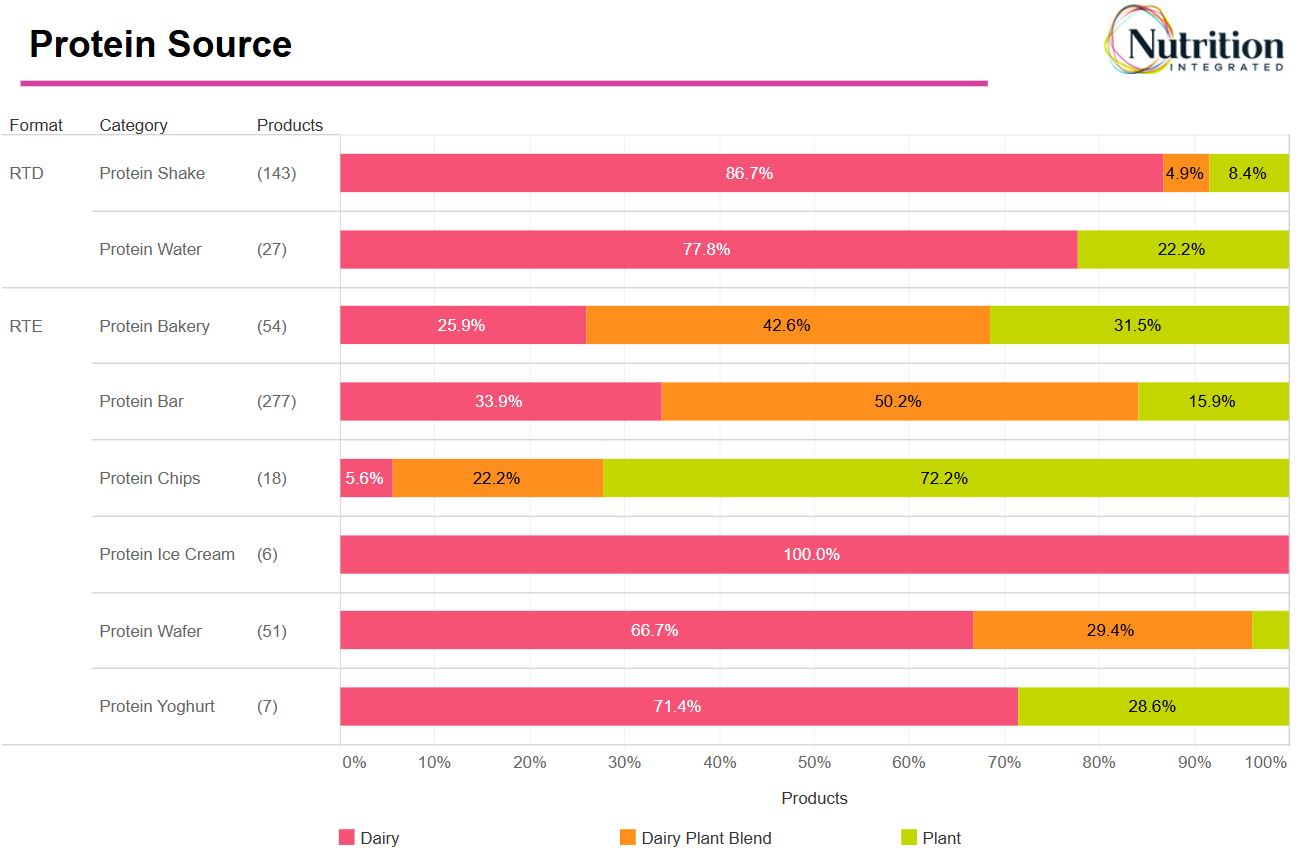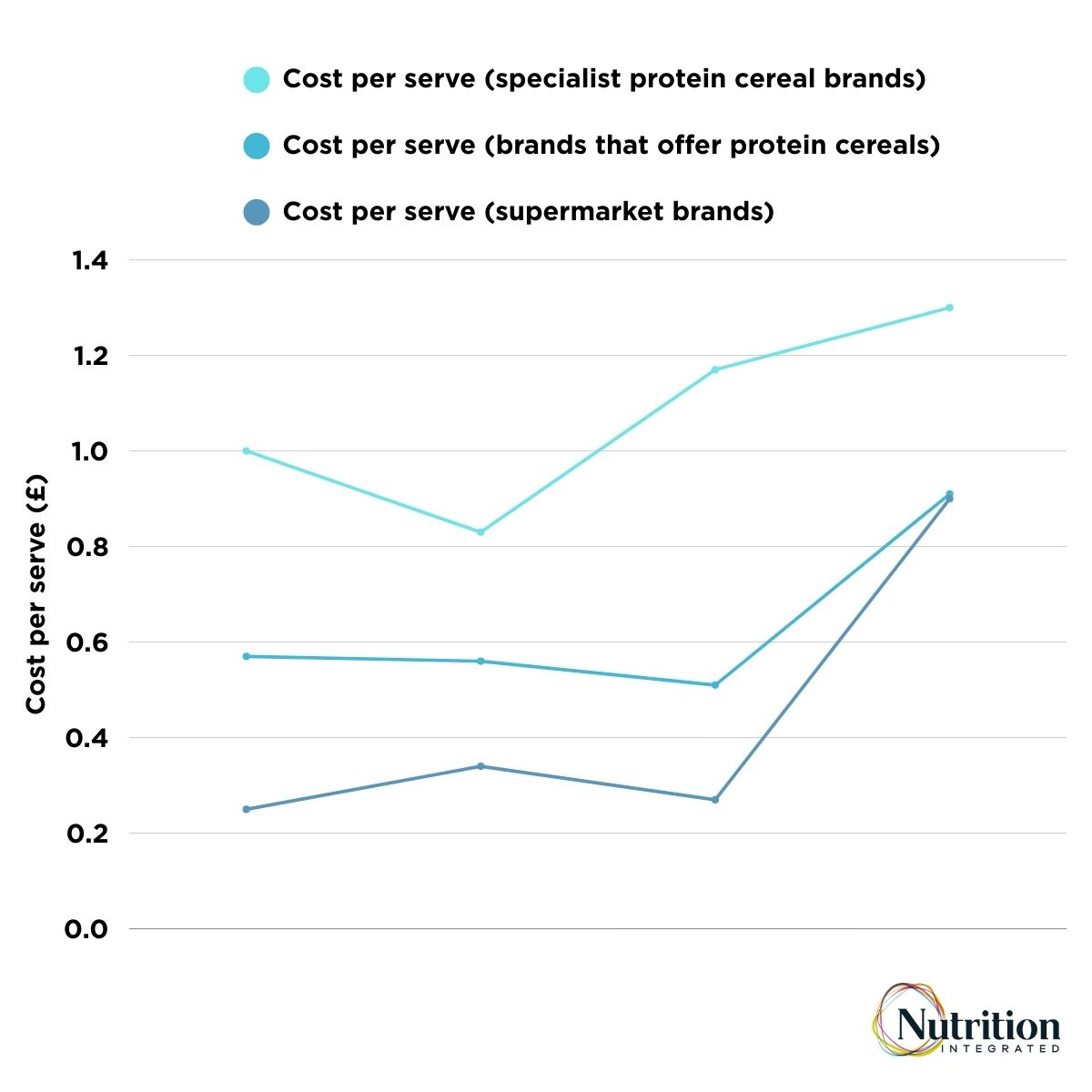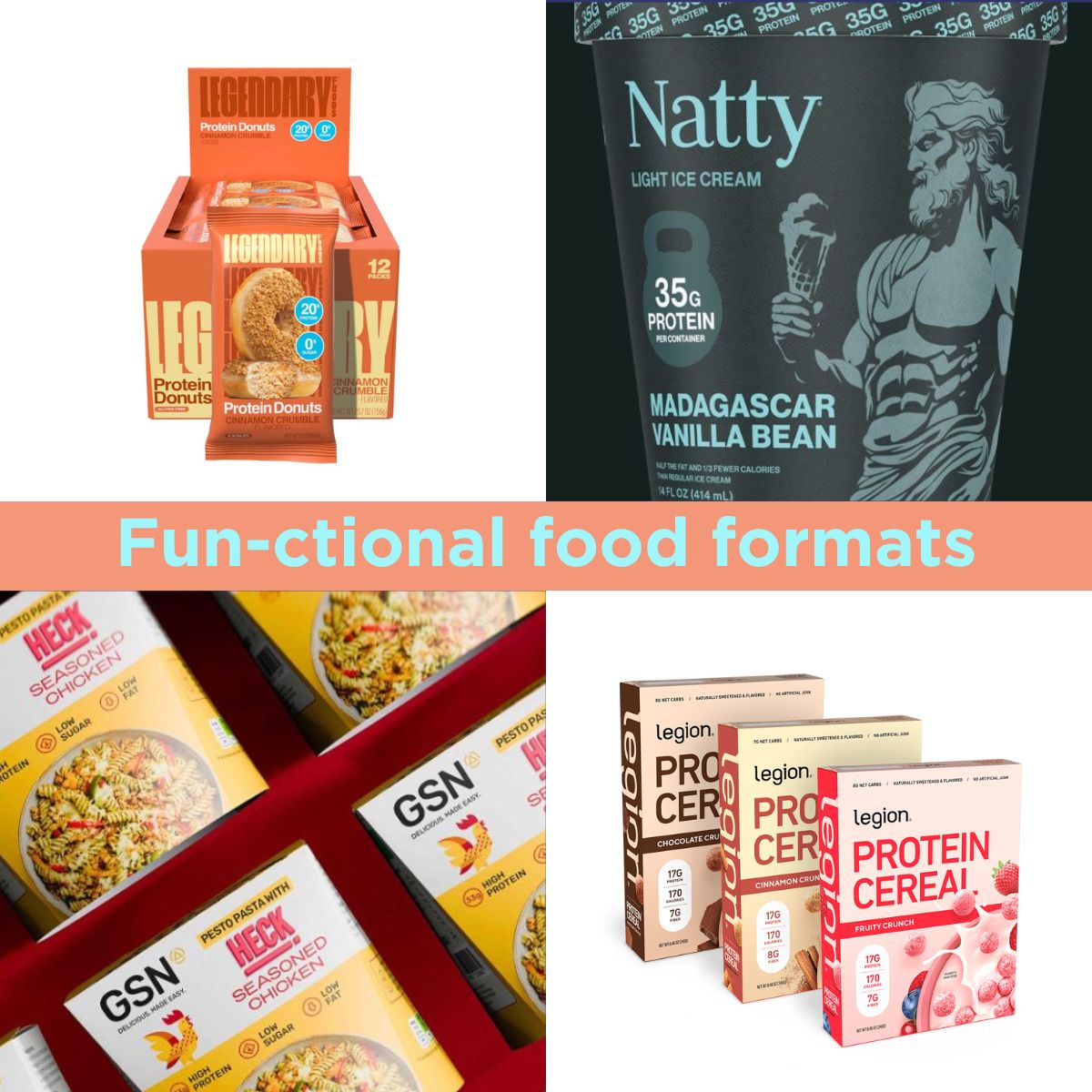We know whey protein dominates sports nutrition. It’s a staple across the protein powders market and has a strong role in bars and ready-to-drink products.

The graph above shows how dairy vs plant proteins (or a combination of both) are being used across various categories in Europe. Unsurprisingly, dairy proteins dominate in traditional dairy foods such as ice creams and yoghurts, but when it comes to bakery, bars and chips, we can see they aren’t used as much as their plant-based equivalents.
This led us to the question: as protein proliferates into more formats, is whey still the protein source of choice?
So we turned to our ingredient tracker to find out.
For the purpose of this blog, we’ve focused on protein chips/crisps and protein cereals.
Protein chips/crisps
There are no protein chips in our database, either in Europe or North America, that are solely whey-based, but whey does come into play as part of a hybrid formulation in 15% of products. While it’s easy to just see the headline here – 85% of protein chips/crisps use plant proteins – there’s so much more going on once you start to dive into the details of that other 15%.
Let’s take a quick look at the products that are using whey in their protein chip/crisp formulations:
Legendary Foods Protein Chips blends sodium caseinate, milk protein isolate, calcium caseinate, rice protein and whey protein isolate.
Quest Chips Protein Blend uses milk protein isolate, calcium caseinate and whey protein isolate.
Quest Chips Cheese Crackers includes calcium caseinate alongside whey protein isolate.
Total XP Protein Crunch uses milk protein and whey protein.
It’s interesting to note here that although the majority of products don’t use whey, the ones that do are the big brands.
The reasons for this will be varied; it might be that the more established brands are less vulnerable to price changes within the dairy market, perhaps it’s to create a premium positioning, or it could be that the sheer size of the brands mean their products don’t need to appeal to as wide an audience as some of the independent, plant-based ones.
It begs the question though: will we begin to see more smaller and own-brand products follow suit and turn away from plant in favour of whey?
Protein cereal
Of the 109 protein cereals we track, only 1.8% are solely whey-based:
NuTrail Protein Oat Granola uses a blend of whey protein isolate and whey protein concentrate.
Prozis Whey Protein Puffies uses whey protein isolate only.
A further 11% have a hybrid formulation that blends whey with other protein sources:
Magic Spoon Protein Cereal blends casein with whey protein concentrate.
Layenberger 3K Protein Muesli uses milk protein, soy protein and whey protein isolate.
Ratio Keto Friendly Granola uses whey protein isolate alongside soy protein isolate.
This is the interesting part though, as the data emphasises two types of protein cereals – the extruded protein cereals (hoops, puffs), and the granola / muesli-type ones. And again, the devil is in the detail.
It’s unsurprising to see Prozis use only WPI; it’s a sports nutrition brand so you would expect a premium protein source to be used. As for the rest, let’s look at their on-pack claims.
Magic Spoon’s big claim is that it’s “grain free”, which for their purposes means no soy. NuTrail Protein Oat Granola and Ratio Keto Friendly Granola claim to be “keto certified” and “keto friendly” respectively. Interestingly, this means NuTrail avoids soy protein while Ratio includes it, but let’s leave the debate around whether soy protein is keto or not for another day…
Back to the cereals, Layenberger uses three types of protein to deliver a product that’s nearly 50% protein and “ensures high biological value and a full spectrum of essential amino acids [that’s]... ideal for muscle development [and]... offers a high-quality protein source for athletes and health-conscious individuals.”
In the world of protein cereals, it seems, whey is very much used from a functionality perspective to deliver specific benefits.
The truth of the matter though, is that when it comes to the ready-to-eat protein snacks category, consumers are – for the most part – unlikely to choose one snack over another because of the protein source and so plant proteins remain the hero ingredients.
Interested in finding out which ingredients are being used that aren’t whey? Or what about how they're being used across bars, yoghurts or shakes? Talk to us today, our ingredients tracker will have the answers.



































